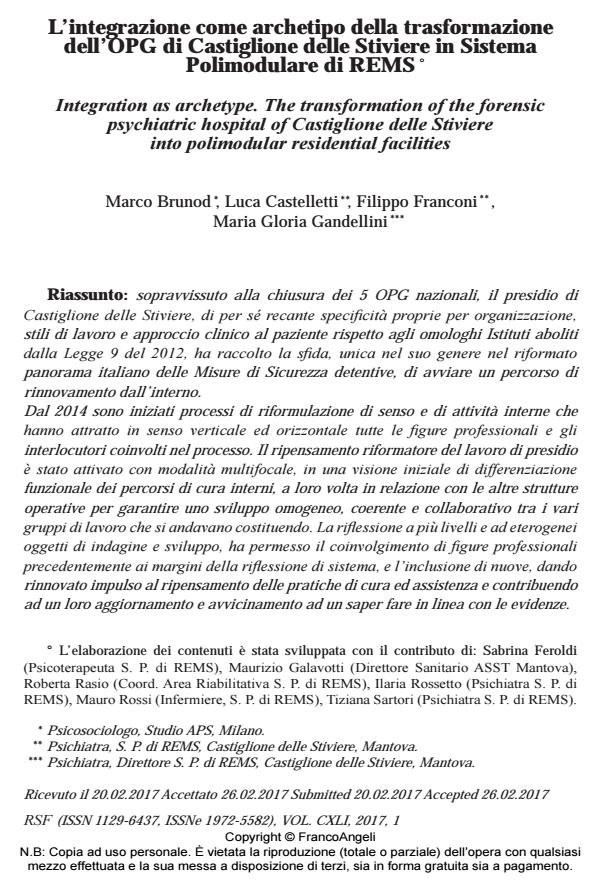Integration as archetype. The transformation of the forensic psychiatric hospital of Castiglione delle Stiviere into polimodular residential facilities
Journal title RIVISTA SPERIMENTALE DI FRENIATRIA
Author/s
Publishing Year 2017 Issue 2017/1
Language Italian Pages 19 P. 55-73 File size 1732 KB
DOI 10.3280/RSF2017-001005
DOI is like a bar code for intellectual property: to have more infomation
click here
Below, you can see the article first page
If you want to buy this article in PDF format, you can do it, following the instructions to buy download credits

FrancoAngeli is member of Publishers International Linking Association, Inc (PILA), a not-for-profit association which run the CrossRef service enabling links to and from online scholarly content.
The Law 9/2012 announces the closure, in a laps of two years, of the six Italian forensic psychiatric institutions in view of the creation of new facilities. However, the forensic psychiatric hospital of Castiglione delle Stiviere, in Mantova, remains operational due to the quality of care. In 2014, a project to renew this forensic institution is set up and six residencies with security measures (Law 81/2014) are opened. The authors describe the three first years of this experience - i.e. organization, education and training - highlighting a systemic process of inclusion, that follows two directions (vertical and horizontal) with the aim to facilitate personnel involvement. Focus groups on specific themes are organised. This transformative experience becomes a laboratory for the improvement of integrated projects and activities for forensic patients. However, this project still requires further endeavors to change the previous paradigm (the asylum) into community facilities.
Keywords: Forensic psychiatry, Italian forensic residencies, relational systems, organizational change, participatory planning, integration, work task, psychiatry and institutions, training.
, L’integrazione come archetipo della trasformazione dell’OPG di Castiglione delle Stiviere in Sistema Polimodulare di REMS in "RIVISTA SPERIMENTALE DI FRENIATRIA" 1/2017, pp 55-73, DOI: 10.3280/RSF2017-001005